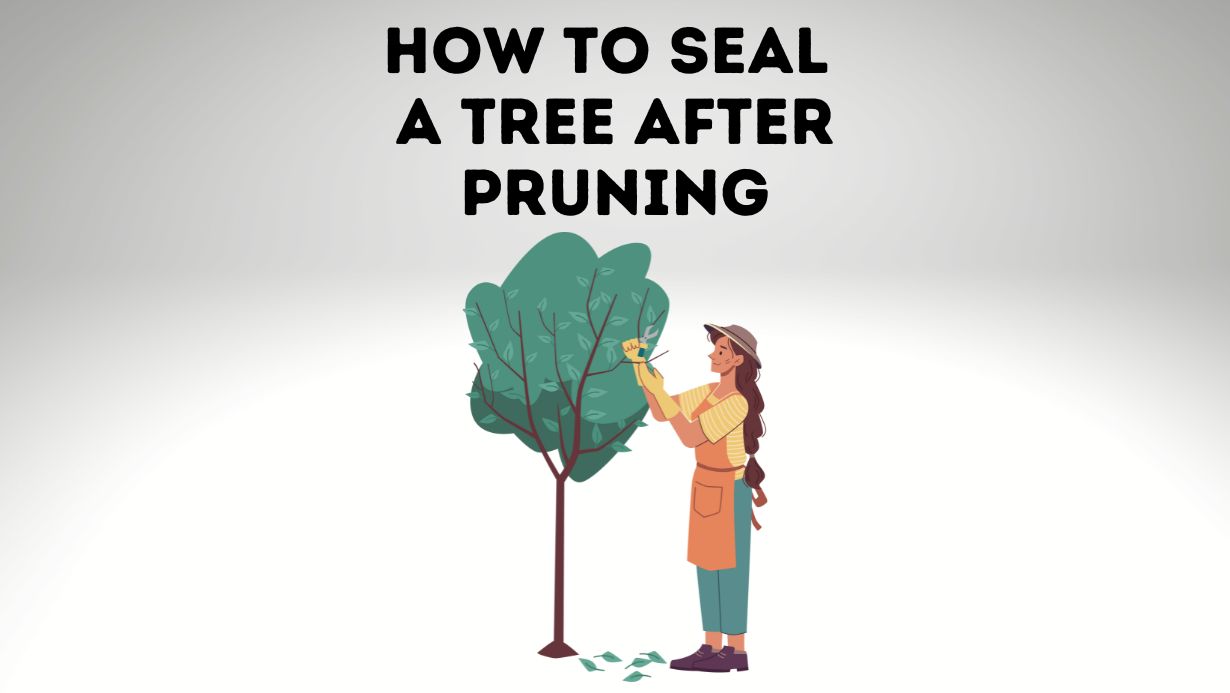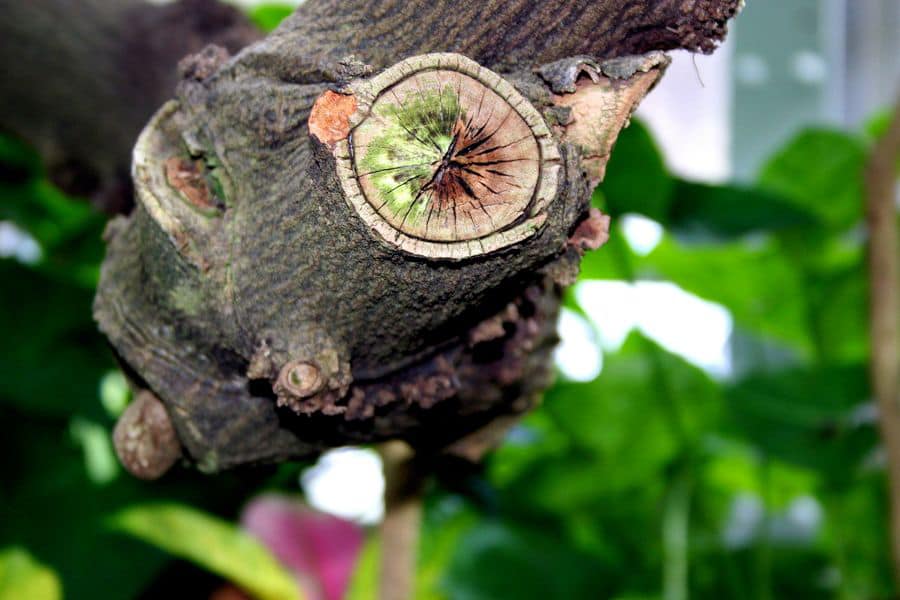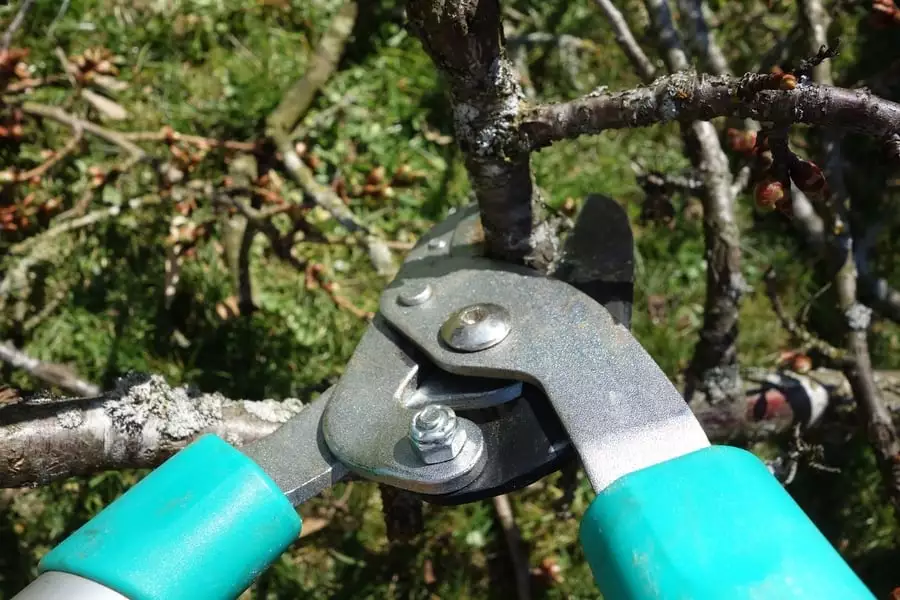
I hope you’re about to read this article before purchasing a can of wound sealer for your tree. If so, this article might save you some money. Here’s how to seal a tree after pruning.
You do not need to seal a wound after pruning. A tree has all the processes in place to seal itself, preventing infection and decay. Putting wound sealer on a tree can be bad for the tree, even helping pathogens spread faster. Instead, you need to let the tree seal itself.
In this article, I will explain how trees seal themselves. I’ll then cover the negatives of wound sealer and I’ll finish with what to do instead.

A Tree Will Seal Itself After Pruning
Sealing a wound after pruning is a big no-no in the world of Arboriculture. But I can see why people think it’s a good idea. Humans put dressings over their wounds, so they think it makes sense to do the same for trees. Humans and trees heal differently. Once we understand the healing process of trees, we can understand why dressing their wounds is a bad idea.
Dressing tree wounds is a practice that has been around for many, many years. Here are some of the supposed benefits behind wound dressing:
- Stop rot
- Stop the spread of infection
- Some want to keep the site moist
- Some want to keep the site dry
- Keep insects out
Again, we see these ‘benefits’ and they make sense if we’re treating a human. But we need to leave trees alone and give them time to seal off their wounds themselves.
Trees don’t heal wounds, they seal wounds. The sealing of a tree wound happens in a process called CODIT. CODIT is an acronym that stands for:
C – Compartmentalization
O – Of
D – Decay or Defect
I – In
T – Trees
Rather than heal the tissue, a tree will seal the wound off from the rest of the tree. To do this, the tree will create four walls to surround the wound. In a healthy, sturdy tree, these walls will prevent rot, infection or decay from affecting the rest of the tree.
The photosynthetic rate of a tree will determine how well the tree will compartmentalise.
There are four main factors that influence photosynthesis.
For an in-depth look into CODIT and how it works. Check out this article: CODIT in Trees Explained
So if you think back to the ‘benefits’ of wound sealer, the tree will:
- Stop rot on its own
- Stop the spread of infection on its own
- Keep insects out on their own
The tree will do this just fine without the need to keep the site moist or dry. In fact, keeping the site moist and covered can be bad for the tree. I’ll explain in the next section.

So, Why Is Wound Sealer Bad For a Tree?

For a long time, there were no studies to show the effects wound dressing has on trees. Alex Shigo wanted to change that.
In the book A New Tree Biology, Shigo walks us through a study he conducted on the effects of wound dressings on trees. The study spanned several years and shows the difference between sealed and non sealed trees.
Shigo found that both sealed and non sealed trees looked pretty similar after one or two years. But after five to seven years, some of the sealed trees had much more decay. Shigo believes the wound sealer ends up protecting the pathogens, rather than the tree.
I highly recommend reading anything from Shigo. He is the father of modern arboriculture. If you’re looking for some more book recommendations, check out my list of books to read here.
To summarize Shigo’s findings, using a wound sealer is bad because:
- It slows the progress of discolored wood
- It creates ideal growing conditions for pathogens
Let me explain further…
Wound Sealer Slows the Progress of Discolored Wood
Though it can look bad, discolored wood can be beneficial to a tree. Discolored wood sometimes can actually slow the spread of pathogens. Once again, the tree is creating its own defences.
During his studies, Shigo found that some wound sealers prevented discolored wood. In these trees, pathogens spread faster as nothing was slowing them down. So, if you stop discolored wood from forming, you help the spread of pathogens.
Wound Sealer Creates Ideal Growing Conditions for Pathogens
Some brands of sealer protected fungi inside the wound rather than the tree. In doing this, the sealer also created ideal growing conditions for the fungi.
These types of dressings:
- Protected the fungi
- Kept the wound moist
- Helped the fungi to grow faster and easier
What Can We Do Instead?
We’ve learned that wound sealers are bad and we shouldn’t use them. So, what should we do then?
Nature has a wound dressing that does resist pathogens. The material is made on the inside of wounds. What we must not do is to destroy the only wound dressing that works! – Alex L. Shigo
The above quote answers this question perfectly. Provided we make the right type of cuts, we do nothing. We need to sit back and let the tree do its thing. A tee will get to work putting in place all its defensive measures.
If you think you have made a bad cut, don’t worry. I’ve written an article that covers how to fix a badly pruned tree. You can check out that article here.
